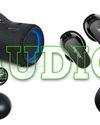When Microsoft made the surprise announcement of a new augmented reality (AR) product at a Windows 10 event in early 2015, the Microsoft HoloLens headset wasn’t the first thing the audience saw. Instead, as he unveiled the new technology to the world, Microsoft’s Alex Kipman — creator of both the Microsoft Kinect motion controller and the HoloLens — showed a logo for Windows Holographic, the Windows 10-aligned software platform underpinning Microsoft’s AR ambitions.

More than two years later, the software powering Microsoft’s growing AR device ecosystem is still the best indicator of where the company plans to take its mixed-reality (MR) future. It’s got a different name now—Microsoft re-branded Windows Holographic to Windows Mixed Reality—but the goal hasn’t changed. Microsoft wants to build an interoperable network of AR, VR, and mixed-reality headsets from different manufacturers, all talking to one another and running Windows 10 Universal Apps.
There are three prongs to this approach: Microsoft’s first-party hardware (HoloLens), the evolving software stack housed within the Windows Mixed Reality platform, and Microsoft’s third-party hardware partnerships with Acer, Asus, Dell, HP, and Lenovo to build $299 mixed-reality headsets running Windows 10. The first of these, the Acer Windows Mixed Reality Development Edition headset, is already shipping to developers.
WHAT IS MIXED REALITY?
Microsoft isn’t the only AR company that has started using the term mixed reality to differentiate among points on the AR/VR spectrum. On AR side are the monocular glasses you see from companies such as Vuzix and smartphonebased AR popularized by apps such as Pokemon Go.
On the other side are the more immersive, binocular, head-mounted experiences (displays in both eyes with a 360-degree field of vision) offered by devices such as the HoloLens, the ODG R-9 glasses, and the still-unseen Magic Leap. In oversimplified terms, you can think of AR as adding overlaid information or virtual objects in more of a two-dimensional way on top of what’s in front of you.
But the continuum in which these kinds of technologies exist goes deeper than that. A spectrum with the physical world on one side and true virtual reality on the other would look something like this:
この記事は PC Magazine の May 2017 版に掲載されています。
7 日間の Magzter GOLD 無料トライアルを開始して、何千もの厳選されたプレミアム ストーリー、9,000 以上の雑誌や新聞にアクセスしてください。
すでに購読者です ? サインイン
この記事は PC Magazine の May 2017 版に掲載されています。
7 日間の Magzter GOLD 無料トライアルを開始して、何千もの厳選されたプレミアム ストーリー、9,000 以上の雑誌や新聞にアクセスしてください。
すでに購読者です? サインイン

AUDIO
AUDIO

SMART HOME
SMART HOME

T Mobile
Mobile

Lenovo Legion 5 Pro Gen 7 (2022): Nearly an Editors' Choice
A solid gaming laptop for under 2,000

Apple TV 4K 3rd Generation): Best for the Apple-Centric
A powerful, feature-rich media streamer that’s pricier than most

20 Tips for Leveling Up Your Work-at-Home Game
Whether you're new to working remotely or just looking fo do if beffer, fhese fips can help you stay productive and maintain balance.

12 Google Calendar Tricks You're Probably Not Using
Wondering how to share your Google Calendar? Want to add a new calendar? Here are the tips you need.

SimpliSafe Home Security System: Affordable Ease of Use
Affordable security with a focus on flexibility

Honda Unveils First All-Electric SUV, Built on GM's Battery Platform
The Honda Prologue battery-electric SUV arrives in 2024 and will use the Ultium battery technology developed by General Motors.

We Must Save Streaming Video Before It’s Too Late
A generation of art risks extinction if the companies that own streaming services don’t believe their vast libraries are worth preserving. We have to act now to save it.